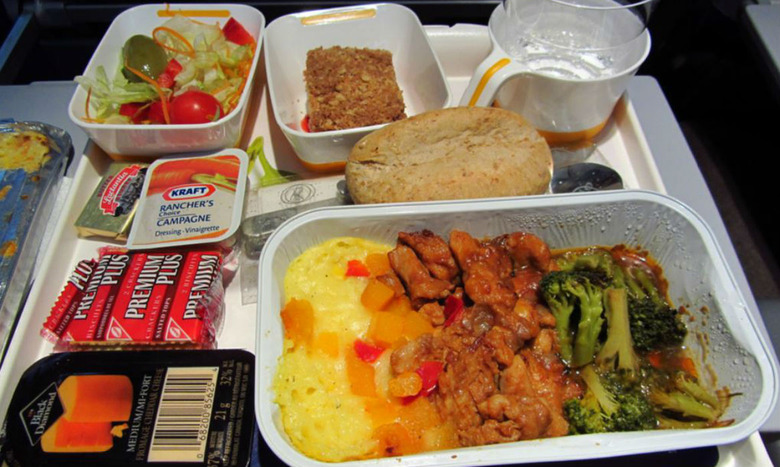How Is Airplane Food Warmed Up During A Flight?
For some, airplane food is something to be derided and picked at. For others, it's a welcome respite during a long and uncomfortable flight. Love it or hate it, however, it's impossible to deny the fact that a full, warm meal can be served at 35,000 feet in the air. How are airplane meals made, and how are they all warmed up onboard a plane?
Airline meals are meticulously planned — a process that can take up to a year. They're tested both on the ground and in-flight to make sure they properly compensate for the palate deadening a pressurized cabin inflicts. They are produced at giant facilities near airports about 10 hours before each flight. They're partially cooked and blast-chilled, then transferred to the airplane, where they're stored on specialized racks. During flight, these racks are transferred to convection ovens, where they're blasted with high heat for about 20 minutes before being placed onto dinner trays, transferred onto carts, and distributed. Contrary to what some may believe, they're not microwaved, and no airplanes have onboard microwaves.
And for the record, if you're looking to eat a meal that's actually decent, avoid the pasta (which will be overcooked), fried (which will be soggy), and chicken (which will be dry) dishes, and stick with stews, curries, and other dishes that require slow-cooking, which will be more consistent.
